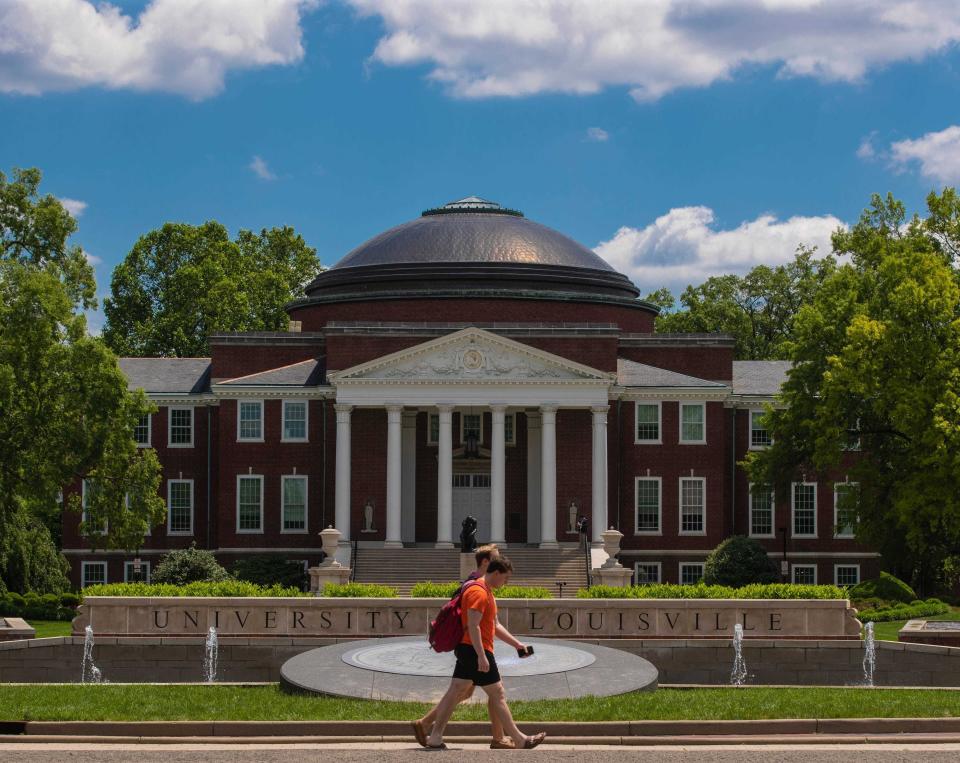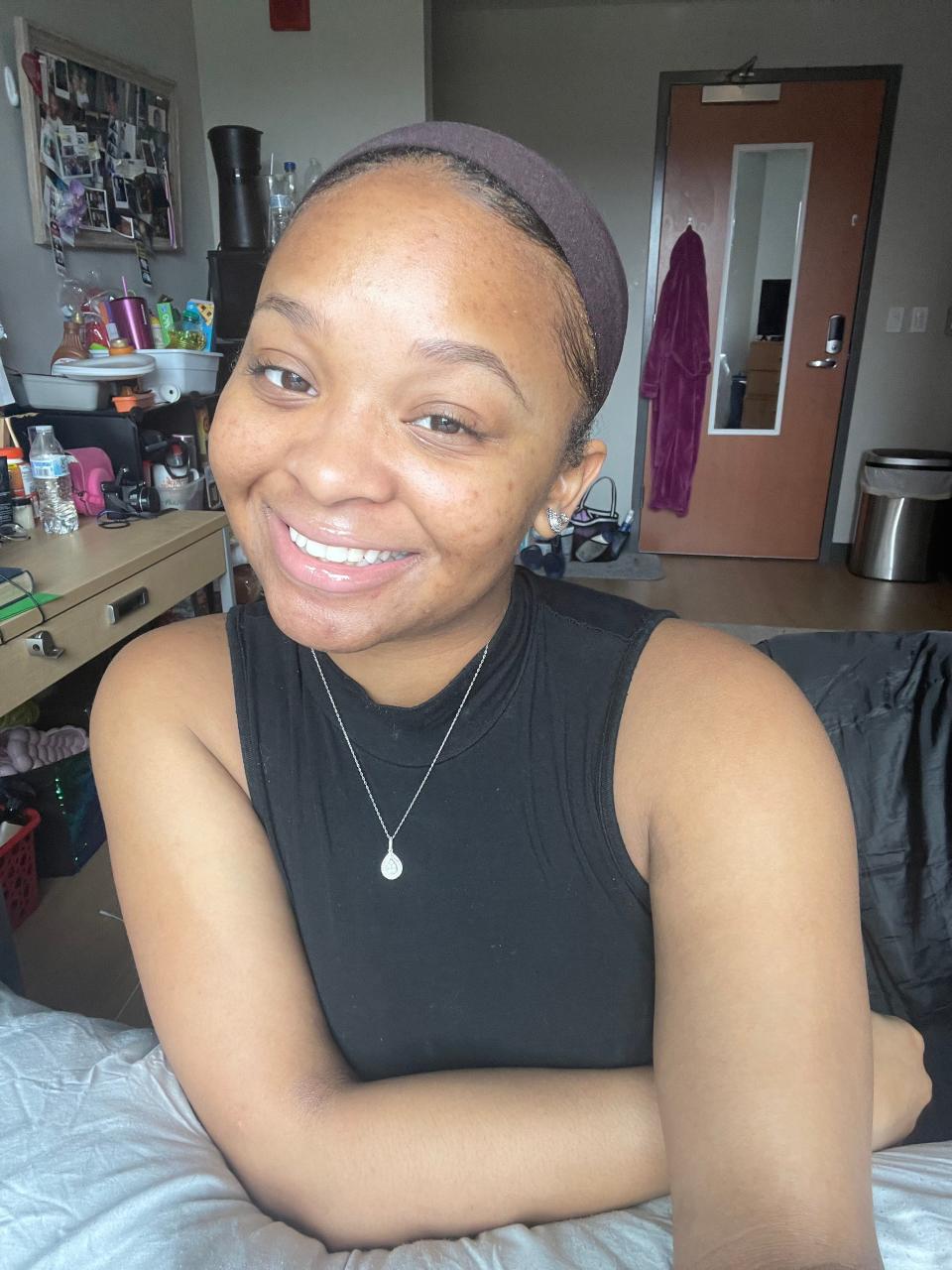U of L is a predominantly white institution. Here's what it means for students of color.
Last fall, the student body at The University of Louisville was 62.8% White, 13.7% Black, and 17.6% All Other Minorities, which means that my university is a PWI, or Predominantly White Institution. As a young Black woman, I came to this place with my identity intact, but I’ve learned that my experience is the exception, not the rule. I’ve met teens from Taylorsville, Shelbyville, Florida, Chicago, D.C. and even from overseas, who struggle to find their unique personalities, beliefs and gifts.
It seems like finding your own identity is like finding your favorite piece of clothing you lost months ago. It's either you find it and it doesn’t fit like it use to, or you don’t find it at all…eventually just forgetting about it. Being an African-American woman, it was easy for me to come up with my Cultural Identity because I am constantly reminded by the world, my family and the situations I can be put in. That isn’t the case for everyone.
What is cultural identity?
Cultural identity is how you identify with yourself, your sense of belonging and your identification with certain cultural groups according to your nationality, ethnicity, race, gender, sexuality, religion and more. Struggling with cultural identity is something many people of color experience. I have never experienced this myself because I was raised around people who looked like me, or have lived the same life as me.
Countless students either gain a part of their cultural identity on campus by emerging in events or places that provide a space to talk about differences. They can also lose bits of it the longer they’re there due to wanting to fit in with friends, getting put in situations where their race is the joke, events and the fear of being alone for something you can’t control. Instead, universities should reduce the chances that students lose a part of their culture.
We should first consider what it feels like to grapple with our cultural identity in college. So, I interviewed one of my closest friends, Jamiere Weaver, a Nigerian who was placed for adoption by his immigrant parents. Jamiere was adopted by a White woman when he was a baby and is now a freshman majoring in Business Administration at U of L.
When I asked Jamiere about his first memory of feeling different on campus, he pointed to “how people interacted with me.” As he looked for friend groups, Jamiere remembered, he realized “what they thought about me before they met me. I felt as if they could tell I was white-washed. This is something I’ve been called since attending Newburg Middle School, and it hurts.”
For Jamiere, the first semester at U of L brought a ton of learning experiences, many of which were outside the classroom. “The first semester is when I started to learn more about my country Nigeria and just become educated on my origins. I got lucky to meet a friend who was also Nigerian and was a gigantic help. When we first met, we instantly clicked, and I told her my story. She told me so many things about the culture, answered any of my questions, and is just an amazing friend.” A good friend is something hard for most students to find on a PWI.

U of L's Culture Center is a small but special place
The University of Louisville offers mainly one place you can go to if you’re different. One place. The University of Louisville Culture Center. Students like Jamiere find a safe space here and constantly visit. Jamiere stated he didn’t even know a place like this existed because, during Freshmen Orientation, the school doesn’t even take you there nor did they bring it up during the campus resource talk. I was the first one to ever introduce it to him and bring him in there for Melanin Mondays which is a weekly event celebrating different shades of skin. Offering food, games and just a place to relax.
The Cultural Center is the one place that offers a second home to anyone different and one of the smallest buildings on campus as well. It is the home of The Woman’s Center, The LGBTQ Center, The Muhammed Ali Center and The Hispanic, Latinx and Indigenous Initiatives. While one of the Campuses it is located on, Belknap Campus, covers 274 acres and is home to eight of the 12 academic colleges. This includes the football stadium, softball stadium, Cardinal track and Soccer Stadium, Bass-Rudd Tennis Center, and the baseball stadium (Jim Patterson Stadium). How can the home of 31.3% of people who share a racial difference find a second home on campus?
I also asked him if there was anything more he wanted from U of L or anything more he wants to learn more about himself? He responded, “When the school recognizes there is a PWI they need to provide more resources for us because college is the start of a lot of people’s life when being an Adult and the culture can get washed from a lot of students especially with us being in America.” Jamiere also added that “The Cultural Center feels like a hut because all of us are in that small space, and we aren’t a small group. There are a lot of us and were more than just that small number.”
Culture Identity is important on campuses for everyone no matter if it's Predominately White Institution, a Historically Black University/College, or a perfect mix. Historically Black colleges have more pan-African study courses, bigger events for the culturally different and more diverse professors and counselors. Funding is needed at our Cultural Center so we can promote the idea that having a cultural identity issue or the idea that we are different. Oblivious at the end of the day we can’t provide for everyone and can’t satisfy everyone’s needs. But the Culture Center is a second home to people on campus, and that home needs support too.

Nadia Rose Pratt is a Secondary Education Major with a track in English as well as a minor in journalism. She attends the University of Louisville, and is a second semester sophomore who cares a lot about my culture, and heavenly thrive in it everyday.
This article originally appeared on Louisville Courier Journal: I'm a student of color at Louisville's predominantly white institution

